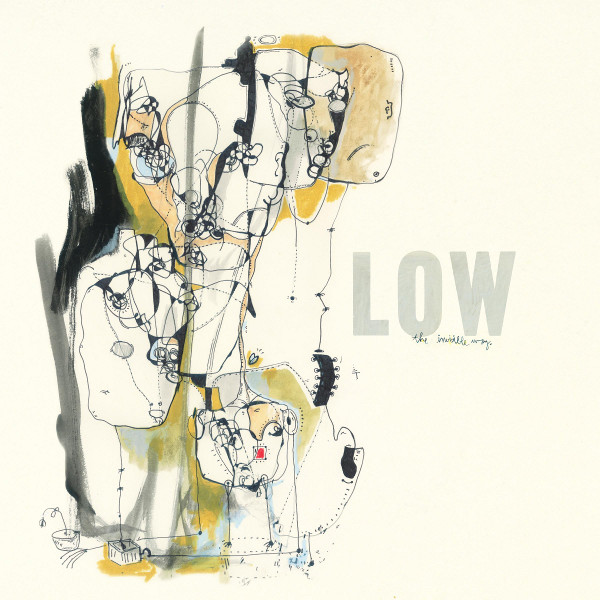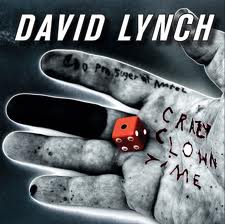Label: 4AD Format: DVD+3xCD
 There is an air of finality about the title and contents of 1981-1998. With the dissolution of their musical partnership into separate solo careers, Lisa Gerrard and Brendan Perry are no longer Dead Can Dance, but as the extensive essay on the group included in the luxurious slip-cased hardbacked book (jam-packed with landscape photos) which makes up the packaging of the set observes, the band lives on through its music. However trite that may appear at first – all now-split bands or deceased artists exist beyond their actual personal existence together, barring reunions and the like – somehow it seems even more appropriate when considering Dead Can Dance, who practically embody the idea of timelessness in their uniquely overwhelming sound.
There is an air of finality about the title and contents of 1981-1998. With the dissolution of their musical partnership into separate solo careers, Lisa Gerrard and Brendan Perry are no longer Dead Can Dance, but as the extensive essay on the group included in the luxurious slip-cased hardbacked book (jam-packed with landscape photos) which makes up the packaging of the set observes, the band lives on through its music. However trite that may appear at first – all now-split bands or deceased artists exist beyond their actual personal existence together, barring reunions and the like – somehow it seems even more appropriate when considering Dead Can Dance, who practically embody the idea of timelessness in their uniquely overwhelming sound.
One of the aspects of the group’s career which is remarked upon in the interview material is that, unlike many other groups, it sometimes seemed as if Perry and Gerrard lived exaulted lives of musical perfection in ivory towers, distanced and separated from all other art and time frames. As the text reveals, nothing could be further from the truth, with the pair scrimping and saving in a Lebanese restaurant kitchen to leave a Melbourne music scene they existed on the periphery of for London’s apparently more bountiful artistic pastures. Instead, their early recordings were composed against a backdrop of Thatcherite decay in a council flat, watching daytime TV while living on the dole. Still, perhaps these humble beginnings give Dead Can Dance the requisite artist’s garrett background instead.
As for the collection of music on the three CDs, there is a wide overview of the pickings of album tracks as well as a bountiful supply of unreleased material. These include an early demo of “Frontier”, five 1983 and 1984 Peel Session takes including previously unheard tracks like “Orion” and “Labour Of Love” from when they were still somewhat Gothic in their love of flanger and chorus effects on the long guitar rambles between the elevated vocals of Gerrard and the convoluted percussion arrangements. The excerpts from Spleen And Ideal here showcase a grander sound, with the distinctive blend of orchestral instrumentation underpinning that stunningly evocative voice to highly emotive effect, and it was from this point on that Dead Can Dance became special.
Theirs was a sound that demanded rapt attention when Lisa Gerrard sang; the heavenly hosts incarnate in choirs flowing with gossamer ease to the new and rediscovered musical forms from the world over; vibrant percussion and expertly-employed electronic analogues of organs and voices; sheer, persistent attention to detail which by all accounts resulted in a perfectionism close to obsession. They insisted that their concerts were non-smoking, even in the most cavernous of Rock venues, to save Gerrard’s voice, but who can blame them for protecting such a unique instrument. There may have been room to consider Dead Can Dance as precious, self-satisfied even, but on the whole these were irrelevancies when considering the peaks of their career in such albums as the achingly epic arrangements of Within the Realm Of A Dying Sun (1987) or the faux-Mediaeval glory of Aion (1990), represented here by the chiming choral glories of DCD’s arrangement of traditional pieces like “The Song Of The Sibyl” and high-kicking dance numbers like “Saltarello” or their own equally impressive “The Arrival And The Reunion”.
Likewise, the earlier Serpent’s Egg in 1988 drew in Middle Eastern forms to the constantly-evolving sound, and these latter two albums balanced the voices of both Gerrard and Perry to a greater degree then before or since: while Perry has a distinctive and rich delivery, some of his lyrical excesses tip over into pure pomposity as his later solo recordings occasionally demonstrated. However, it was with classic moments of soaring vocal intensity like “The Host Of Seraphim” that Dead Can Dance shot into the hearts of TV and film music directors alike following its inclusion in the ambient spectacular Baraka – this is probably the piece most often used whenever a production needs an old-world sounding accompaniment to liven up whatever documentary or drama they happen to be working on. Such stylistic laziness is not the band’s fault, but as with Massive Attack, Dead Can Dance have become a soundtrack cliché of considerable proportions.
Their more sample-based approach to composition soon grew over time into the hypnotic grooves and multi-ethnic influences of Into The Labyrinth (1993), whose “Yulunga (Spirit Dance)” also made its way from Baraka territory into the realms of archetypal Ethnodelic signifier. With haunting ullulations, wavering reeds and crisply-tranced rhythms, it is also a masterful moment which somehow transcends the New Age/World Music associations through sheer emotional impact alone, perhaps even because rather than in spite of the electronic bird noises mixed between the percussion. However, the rather aptly-titled “Unfortunate Mr Lovegrove” and the radio recording of the drearily folksy and somewhat Dylan-eqsue “Sloth” show that Perry’s somewhat plain songwriting inclinations were shadows in comparison with Gerrard’s transcendent transmissions from Babel. Still, “How Fortunate The Man With None” is a fine sung performance of the words of Bertholt Brecht from Perry, and “The Wind That Shakes The Barley” from the same radio appearance demonstrates that when he brought his Gaelic musical influences to bear on a strong vocal from Lisa Gerrard, the magical atmosphere they could create together in a simple traditional folk song was awe-inspiring.
The group’s final album proper was Spiritchaser in 1996, where their trans-global rhythmic mode was completed, and Dead Can Dance concluded. By this point, the music was tending towards post-modern pick and mix dissolution; powerful individual performances couldn’t overcome the spent feeling of a record heading grimly for something uncomfortably similar to World Muzak status. So perhaps the split which followed was for the best, with those who found Gerrard’s voice the main focus of the band making themselves content with her Mirror Pool album in 1995. Perry’s own Eye Of The Hunter surfaced eventually in 1999.
Included in the collection on the third CD is the bulk of 1994’s live album Towards The Within, and a DVD remastering of the video of the same date on the 1993 US tour. Recorded in Santa Monica, the crystalline performances from the ensemble makes for a stunning musical treat. While the group were not the most spectacular of performers on stage, the intensity of concentration on their faces reflects the efforts which went into the superb concert footage. However, the spell is broken on the film (directed unfussily by Baraka‘s producer Mark Magidson) by the editing of interview footage between the songs, disrupting the flow of the event. Interesting as the insights into Dead Can Dance are, it would perhaps have been better overall if the interviews could have been presented separately. The DVD also includes the engrossing videos for both “The Host Of Seraphin” and “Yulunga”, and the excellently Expressionist promos for “The Protagonist”, “The Carnival is Over” and “The Protagonist”. Along with the usual discographic information presented in tastefully weather-worn 4AD style, the videos complete a lovingly-packaged summation of the joint career of these sometimes more than remarkable producers of beautiful music.
–Antron S. Meister–



